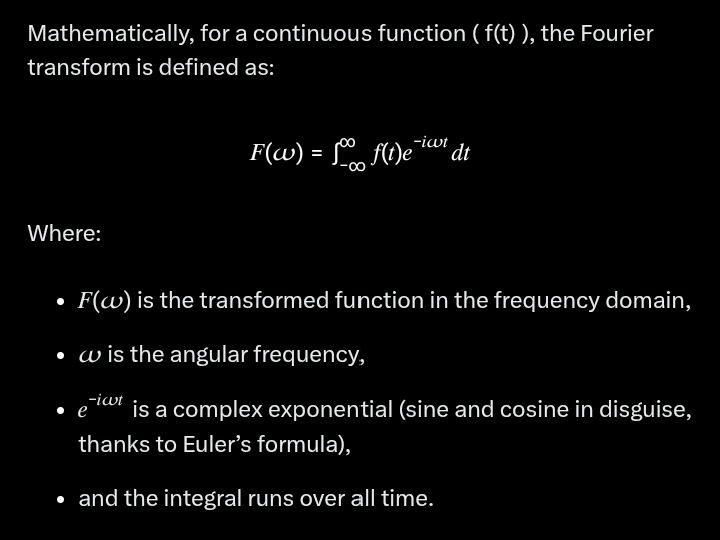
Fourier Transform is a mathematical tool or operation that transforms or breaks down a function or a signal into its constituent frequencies. In essence, it decomposes a complex signal into its constituent sinusoidal components, each with a specific frequency, amplitude, and phase.
Think of it like a prism splitting light into a spectrum of colors—except here, it’s splitting a signal (which could be sound, an electrical waveform, or even a mathematical function) into a combination of sine and cosine waves of different frequencies, amplitudes, and phases.
In simpler terms, it takes a signal that’s defined in the time domain (how it changes over time) and transforms it into the frequency domain (what frequencies make it up). This is incredibly useful in fields like signal processing, physics, and engineering because it reveals the underlying frequency components that might not be obvious from the raw signal.
This is particularly useful in many fields such as signal processing, physics, and engineering, because it allows for the analysis of the frequency characteristics of signals. The Fourier Transform provides a bridge between the time domain and the frequency domain, enabling the analysis and manipulation of signals in ways that are more intuitive and computationally efficient. The result of applying a Fourier Transform is often represented as a spectrum, showing how much of each frequency is present in the original signal.

For practical applications, like analyzing digital signals, we often use the Discrete Fourier Transform (DFT) or its faster version, the Fast Fourier Transform (FFT), which work on sampled data.
For example, if you’ve ever seen an audio equalizer showing bars for different frequency ranges, that’s the Fourier transform at work—it’s telling you how much of each frequency is present in the sound.